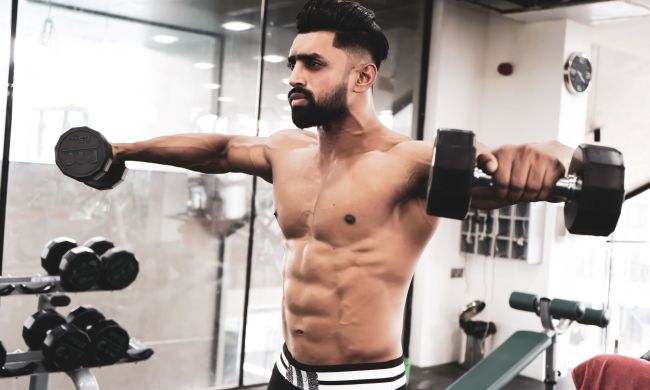
Deep core strength is essential for building a strong and healthy body. Your core muscles, including your abdominals, obliques, and lower back, play a crucial role in maintaining good posture, balance, and stability. They also help you perform everyday activities with ease and efficiency, from lifting groceries to playing sports. Studies show that training your core can help you better perform other athletic activities.
Two popular exercises that often come to mind are planks and crunches, but which is better for your health, planks vs crunches? In this article, we’ll explore the benefits and drawbacks of each exercise, provide step-by-step instructions for doing each one safely and effectively, and offer tips for strengthening your core overall. Whether you’re a fitness beginner or a seasoned athlete, you’ll learn how to build a stronger, more stable core that will serve you well in all aspects of life. Let’s get started!
How do planks and crunches target the core?

When it comes to strengthening your core, two popular exercises often come to mind: planks and crunches. These are both some of the best ab workouts, but they engage your muscles in different ways. Planks primarily target the transverse abdominis muscle, which acts as a deep corset that wraps around your spine and pelvis. This muscle is responsible for stabilizing your core and maintaining good posture. By holding a plank position, you’re engaging this muscle to support your body weight, which can lead to improved core strength and stability.
Crunches, on the other hand, focus on the rectus abdominis muscle, also known as the “six-pack” muscle. This muscle is responsible for flexing the spine and pulling the ribcage towards the pelvis. When performing crunches, you’re lifting your torso off the ground, which requires the rectus abdominis muscle to contract and shorten. This exercise helps strengthen the muscle, leading to improved definition and endurance. While both exercises are beneficial for core strength, understanding their specific targets can help you choose the best exercise for your fitness goals.
How to do a plank

- Start by getting into a push-up position with your hands shoulder-width apart and your arms straight.
- Instead of lowering your body towards the ground, hold yourself up in a straight line from head to heels.
- Engage your core muscles by drawing your belly button towards your spine. Keep your shoulders down and away from your ears and your chest up.
- Hold this position for 30 to 60 seconds, breathing naturally.
- Come down from the position slowly and in a controlled manner.
Things to avoid
- Letting your hips sag or your back arch
- Allowing your shoulders to hunch up toward your ears
- Holding your breath or tensing up
- Failing to engage your core muscles
- Holding the plank for too long, which can result in excessive fatigue or injury
How to do crunches

- Lie on your back with your knees bent and feet flat on the ground.
- Place your hands behind your head for support, but avoid pulling on your head or neck.
- Lift your shoulders off the ground, curling up towards your knees. Point your chin toward the ceiling.
- Focus on using your abdominal muscles to lift your shoulders, rather than relying on momentum or straining your neck.
- Hold the contraction for a brief moment, then slowly lower back down.
- Repeat for 10 to 15 repetitions, taking care not to bounce or jerk.
Things to avoid
- Lifting with your neck or shoulders instead of your abdominal muscles
- Using momentum to lift your shoulders rather than a controlled movement
- Arching your back or straining your lower back
- Holding your breath or tensing up
- Doing too many repetitions that could lead to fatigue or strain
- Not engaging your core muscles properly
Are planks more effective than crunches?

Planks are often considered a more effective exercise than crunches for several reasons. Firstly, planks engage multiple core muscles simultaneously, including the rectus abdominis, transverse abdominis, and obliques, which leads to more comprehensive core strength and stability. In contrast, crunches primarily target the rectus abdominis muscle. Additionally, planks require engagement of the entire core, which helps improve posture, balance, and overall functional strength. Planks also, as a static hold exercise, tend to be lower-impact and less likely to cause strain on the neck and back compared to crunches.
However, crunches are still a good part of an exercise routine! Instead of choosing one or the other, it’s best to use both. As stated above, these two exercises focus on different muscles, so try incorporating them together into one workout. Many studies show that doing a variety of different core exercises is more effective than just doing one.
Helpful tips for strengthening your core

- Start with a strong foundation: Before you begin any core exercises, make sure you have a solid foundation of strength and stability. This means engaging your pelvic floor muscles, drawing your belly button towards your spine, and maintaining good posture.
- Focus on slow and controlled movements: When doing core exercises, focus on slow and controlled movements. Avoid jerky or bouncy movements, which can put unnecessary strain on your muscles and joints.
- Engage your entire core: Don’t just focus on the rectus abdominis muscle (the “six-pack” muscle). Engage your entire core, including the transverse abdominis, obliques, and lower back muscles.
- Use a variety of exercises: Don’t just stick to one or two exercises. Mix it up and try different types of core exercises. Use both planks and crunches (maybe even some interesting varieties of each one), leg raises, and Russian twists.
- Incorporate dynamic movements: In addition to static exercises like planks, incorporate dynamic movements that challenge your core stability, such as rotational movements, lateral movements, and movements that involve lifting or carrying weights.
- Train your core in different planes of motion: Train your core in different planes of motion, such as sagittal (front to back), frontal (side to side), and transverse (rotational) planes.
- Don’t forget about functional exercises: Incorporate functional exercises that mimic real-life movements, such as squats, lunges, and deadlifts. These exercises require engagement of the core muscles to maintain proper form and stability.
- Make it a habit: Aim to do core exercises regularly, ideally two to three times per week. Consistency is key when it comes to building strong core muscles.



